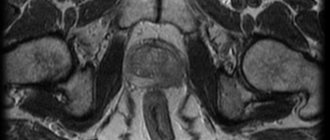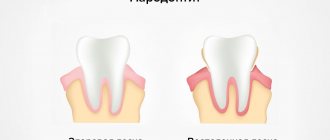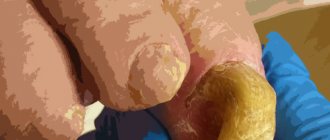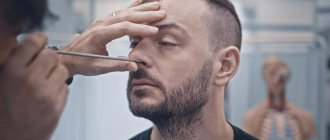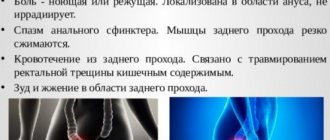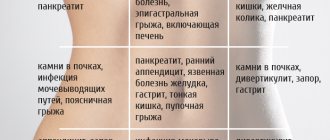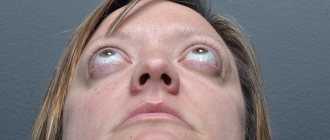Petechiae are pinpoint hemorrhages that have a round shape and occur when small blood vessels under the skin rupture.
Red, purple and violet spots appear as a result of the release of red blood cells from the bloodstream into the interstitial space. Petechiae are like tiny bruises, reaching 1 or 2 mm in diameter. They are not palpable and do not stand out above the surface of the skin. Petechial hemorrhages can be single or multiple. Several flat spots appear at once, which do not change their color and do not disappear when pressed with a finger or stretched the skin.
Petechiae is a symptom of a number of pathologies, among which blood diseases, systemic autoimmune diseases, and some infections predominate.
In healthy people, rashes may appear due to excessive stress. Over time, the spots turn pale and disappear, leaving behind a slight pigmentation. The localization of petechiae is different: the skin of the arms, legs, torso, face, oral mucosa, conjunctiva of the eyes.
Etiology
Before you begin treatment for petechiae, it is necessary to identify and eliminate the causes of their appearance!
Physiological reasons
- The most common cause of petechial rash formation in healthy people is trauma—strong physical impact on the skin. The capillaries rupture and blood flows under the skin. In adults, petechiae are most often formed after a blow, and in children - during games or a fall. Hemorrhages appear on the oral mucosa when eating solid foods.
- Excessive strain, such as during bouts of coughing, emotional crying, or vomiting, can cause capillaries near the eyes and other areas of the face to break.
- Petechiae can often be seen after childbirth in a woman and newborn. Severe overexertion and stress have a negative impact on the skin of mother and child.
- Single petechiae appear during certain sports - weightlifting.
- Tight and uncomfortable clothing is the cause of petechiae.
- Petechiae may appear when the tourniquet is pulled or due to increased pressure on soft tissue. Pinpoint hemorrhages in such cases do not pose a particular health hazard and disappear without a trace after a few days.
- Skin aging.
Pathological causes
As a result of most hematological and autoimmune diseases, the formation and functioning of platelets is disrupted, which is clinically manifested by the appearance of petechiae on the skin. Disseminated intravascular coagulation is also a cause of hemorrhagic rash of bacterial origin.
- Autoimmune diseases - SLE, scleroderma, spondyloarthritis, thrombocytopenic purpura, hemorrhagic vasculitis;
examples of petichiae in thrombocytopenic purpura, characteristic of children
- Infectious diseases - endocarditis, typhoid, smallpox, sepsis, mononucleosis, scarlet fever, tonsillitis, meningitis, cytomegalovirus infection;
- Hypovitaminosis - lack of vitamins K, C;
- Capillary toxicosis;
- Hormonal dysfunction - hypercortisolism;
- Hematological disorders – thrombocytopenia and leukopenia;
- Tumors;
- Drugs;
- Long-term use of certain medications: anticoagulants - Warfarin, Heparin, Naproxen, Penicillin, Indomethacin, Atropine;
- Chemotherapy and radiation therapy;
- Children's scurvy develops with insufficient care, unbalanced nutrition and is manifested by the appearance of scattered pinpoint hemorrhages on the skin of the oral cavity.
Pathogenesis
As a result of traumatic capillary injury, platelets clump together to help the blood clot. Groups of platelets react with factors of the blood coagulation system, blood stagnates in the affected area, and a blood clot forms. In people with existing disorders in the body, the blood coagulation system works less efficiently, and small bruises - petechiae - appear on the skin.
- Primary petechiae are small dots that are initially purple or bluish-black in color and later change color to brown or yellow-brown. This is explained by the formation of hemosiderin in tissues. Gradually, the outlines of the petechiae become blurred and their color fades.
- The mechanism of formation of secondary petechiae is the leakage of blood cells into adjacent tissues. Such hemorrhages do not go away on their own. Patients require surgical intervention.
Some infectious diseases are manifested by the appearance of petechiae on the skin.
This is especially true for children with a weak immune system. In a child, the infectious syndrome is manifested by fever, tachycardia, and shortness of breath. Pathogenic microorganisms produce toxins that damage the walls of blood vessels. Subcutaneous hemorrhages or hemorrhagic rash are a characteristic sign of sepsis. In severe cases, the rash quickly spreads throughout the body, causing fainting, convulsions and delirium.
In systemic diseases, the body’s own vessels are perceived as foreign.
The immune system produces antibodies, immune complexes are formed, which circulate in the blood, settle on the walls of blood vessels and infect them. Patients develop general and specific symptoms: shortness of breath, hyperhidrosis, cardialgia, muscle and joint pain.
If petechiae are accompanied by malaise and fever, spread throughout the body, become large, and look like bruises, you should immediately consult a doctor.
Diagnosis of Schamberg's disease
Only a dermatologist can make a diagnosis. An accurate diagnosis of Schamberg's disease is usually made on the basis of dermatoscopy of the area of the rash and the general clinical picture. The papillary part of the dermis is examined using a microscope, which makes it possible to identify some changes in the capillaries. This may be accumulations of immune cells, club-shaped dilatation of blood vessels, or swelling of the capillary wall.
The detection of red blood cells indicates that there is increased permeability of the capillary wall. In addition, necrosis and ulceration of the capillary wall may be observed. Schamberg's disease causes the appearance of one nodule or a pair of similar formations on the walls of the capillaries.
The main types of petechiae in various diseases
Meningitis
Meningitis manifests itself as a hemorrhagic rash, the elements of which are star-shaped and pale in color. This is an early symptom of the disease, appearing in the first hours and days and spreading very quickly throughout the body. Petechiae are localized on the thighs, legs, buttocks, feet, and lower abdomen. They have a vesicle in the center and often merge with each other, forming extensive ecchymoses, which subsequently often undergo necrosis.
Gonorrhea
With gonorrhea, the rashes are localized on the distal parts of the extremities, above the large joints. They resemble pustules with hemorrhagic contents and are combined with characteristic clinical symptoms - signs of damage to the genitourinary system, anorectal area and pharynx.
Staphylococcal infection
Staphylococcal infection is manifested by purulent petechiae, upon examination of which accumulations of gram-positive cocci are detected. With staphylococcal sepsis, the permeability of vascular walls increases under the influence of microbial toxins. Hemorrhages appear in the form of pinpoint petechiae on the skin, oral mucosa and sclera.
Autoimmune diseases, vasculitis
In autoimmune diseases, petechial exanthema occurs on the arms and legs, and after 2-4 days multiple petechiae appear on it. Their appearance is accompanied by signs of intoxication syndrome: fever, malgia, arthralgia, malaise. Petechiae disappear after a few days, and in their place pigmented areas and areas of peeling remain.
hemorrhages with various vasculitis
Petechial rash with hemorrhagic vasculitis is accompanied by joint damage and abdominal pain. Most often, the large joints of the legs become inflamed - the ankle or knee. Epigastric pain is moderate in nature without obvious signs of dyspepsia. In severe cases, sudden, paroxysmal, colic-like abdominal pain is accompanied by diarrhea, vomiting, and fever.
Schamberg's disease
Schamberg's disease is hemosiderosis of the skin, resulting from autoimmune inflammation of the skin capillaries. Small dots appear on the skin of patients, as if pricked by a needle. At first they have a brown or brown color, and then lighten and disappear for a while. The rashes are located symmetrically on the body, but they are morphologically diverse. This is due to the simultaneous appearance of fresh and old elements on the skin. This disease has a benign course, since only the skin capillaries are affected. Men are more susceptible to pathology. Petechiae are located on the thighs and legs, have different sizes and uneven contours.
Enterovirus infection
Enterovirus infection is manifested by fever, muscle pain, inflammation of the soft meninges, herpetic sore throat, and gastrointestinal dysfunction. After the appearance of a petechial rash on the skin, the condition of the patients noticeably improves, and the body temperature returns to normal. The rash appears within one day. It is located on the face and torso and disappears without a trace by the end of the second day.
Diagnosis of diseases manifested by petechial rash includes collecting complaints, interviewing the patient, conducting laboratory tests and diagnostic tests:
- Coagulogram,
- General blood analysis,
- Bone marrow biopsy.
Disease prevention and prognosis
Taking into account the fact that the causes of Schamberg's disease are still unknown, we cannot talk about prevention. But the patient will have to change his lifestyle. From the list of products, exclude anything that can trigger allergies, and also avoid fried, spicy, sweet, alcoholic, strong tea and coffee, as well as citrus fruits. In addition, doctors recommend not to overwork your legs, avoid overheating and hypothermia of the upper and lower extremities, as well as injury.
Lack of treatment for Schamberg's disease can cause it to become chronic.
As for the prognosis for recovery, they are depressing, since the disease is chronic. Despite this, it does not cause physical discomfort in the patient and does not interfere with his well-being. What is important is the absence of complications. However, a person may feel uncomfortable, since dark spots on the body force them to constantly cover some areas. But timely diagnosis and the use of the correct treatment method alleviate the symptoms, and new age spots will not appear soon.
Diagnosis and treatment
Petechiae that arise spontaneously and are not accompanied by clinical symptoms go away on their own and do not require special treatment. But despite this, people who do not have any diseases need to make sure that there are no hidden causes of hemorrhages.
- If the cause of the petechial rash is injury
, a cold compress will help. It will reduce inflammation and prevent further spread of the rash. To do this, ice is wrapped in a towel and applied to the affected area for 15 minutes. - In case of an infectious process,
patients are prescribed large doses of antibiotics, taking into account the sensitivity of the isolated microbes. Antiviral, immunostimulating, detoxification, sensitizing and symptomatic therapy is carried out. - If the petechial rash is of allergic origin
, the allergen is eliminated and desensitization is carried out. For severe itching, antihistamines are prescribed - Suprastin, Zodak, Zyrtec. - For systemic autoimmune pathologies,
desensitizing drugs, corticosteroids, and vasoconstricting drugs are prescribed - “Ascorbic acid”, “Calcium chloride”, “Rutin”. The course of treatment is long – 4-8 weeks. - General restorative therapy for weakened patients
consists of prescribing vitamins K, P, C, liver extract, transfusion of red blood cells or blood, and administration of globulins.
Traditional methods of treatment
For Schamberg's disease, treatment with folk remedies can be used. But you should not assume that you need to completely abandon medications; you need to understand that alternative treatment is only an addition to the main treatment.
- To increase iron in the blood, you need to make mixtures of dried fruits: dried apricots, raisins, walnuts and honey. Take 3 times a day.
- Buckwheat with kefir will help better absorption of iron - tbsp. pour raw buckwheat with kefir overnight and in the morning - instead of breakfast.
- To strengthen the walls of blood vessels, he recommends including more chokeberries, black and red currants, cranberries and viburnum in your diet.
- To strengthen the walls of blood vessels, it is also useful to eat oatmeal.
- A decoction of clover and Sophora japonica, if used in the morning, is also recommended for strengthening the walls of capillaries.
You must understand that it is impossible to cure Schamberg’s disease; you can only achieve stable remission.
See also other skin diseases here
